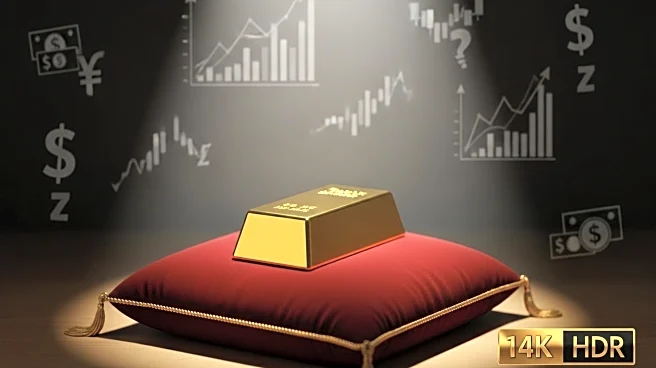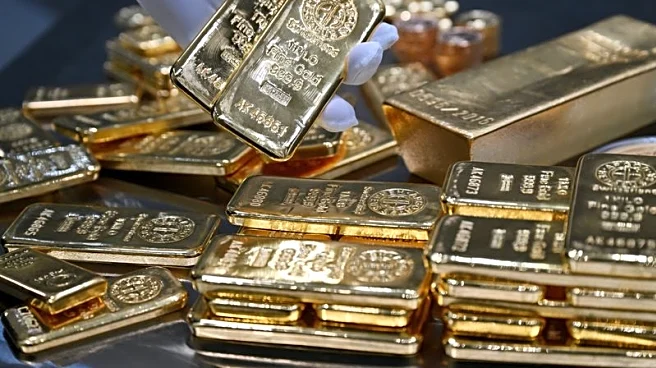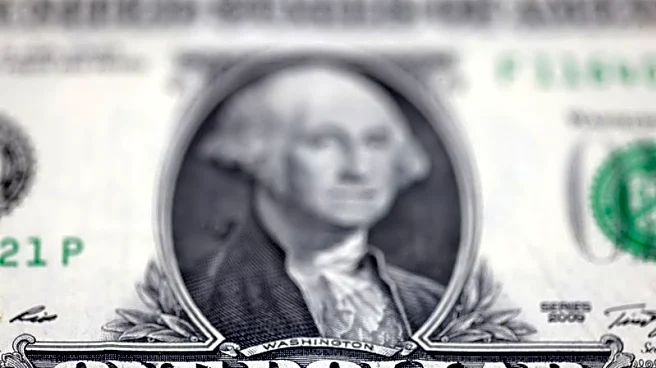What's Happening?
The price of gold has surged to $4,000 for the first time, marking a significant milestone in the precious metal's valuation. This increase is attributed to investors seeking stability amidst economic uncertainties, including a 10% drop in the U.S. dollar index and inflation rates exceeding the Federal Reserve's target. The Fed's recent interest rate cuts have made short-term debt instruments less attractive, further boosting gold's appeal. Central banks and retail investors are increasingly purchasing gold, with countries like China shifting away from U.S. Treasuries following sanctions imposed by the Trump administration on Russia. Retail investors are also turning to gold as a hedge against inflation, with major retailers like Costco and Walmart reporting high demand for gold bars.
Why It's Important?
The rise in gold prices reflects broader economic trends and investor sentiment. As traditional debt instruments lose appeal due to lower interest rates, gold becomes a preferred asset for wealth preservation. This shift impacts financial markets, influencing investment strategies and portfolio allocations. The move away from U.S. Treasuries by countries like China signals potential geopolitical and economic shifts, affecting international trade and relations. Retail demand for gold highlights consumer concerns over inflation and economic stability, influencing spending and saving behaviors. The situation underscores the interconnectedness of global economies and the impact of policy decisions on market dynamics.
What's Next?
The Federal Reserve is expected to meet on October 29, with market anticipation of further interest rate cuts. This could continue to influence gold prices and investor strategies. Analysts warn of potential 'uptrend exhaustion' in gold, suggesting possible market corrections. Retailers may face challenges in meeting demand for gold bars, impacting supply chains and pricing. Investors and policymakers will closely monitor economic indicators and geopolitical developments, assessing their impact on financial markets and asset valuations.
Beyond the Headlines
The surge in gold prices raises questions about the long-term sustainability of current economic policies and their impact on global financial stability. Ethical considerations arise regarding the environmental and social implications of increased gold mining and production. The trend may also influence cultural perceptions of wealth and investment, as gold's historical significance as a store of value persists.












